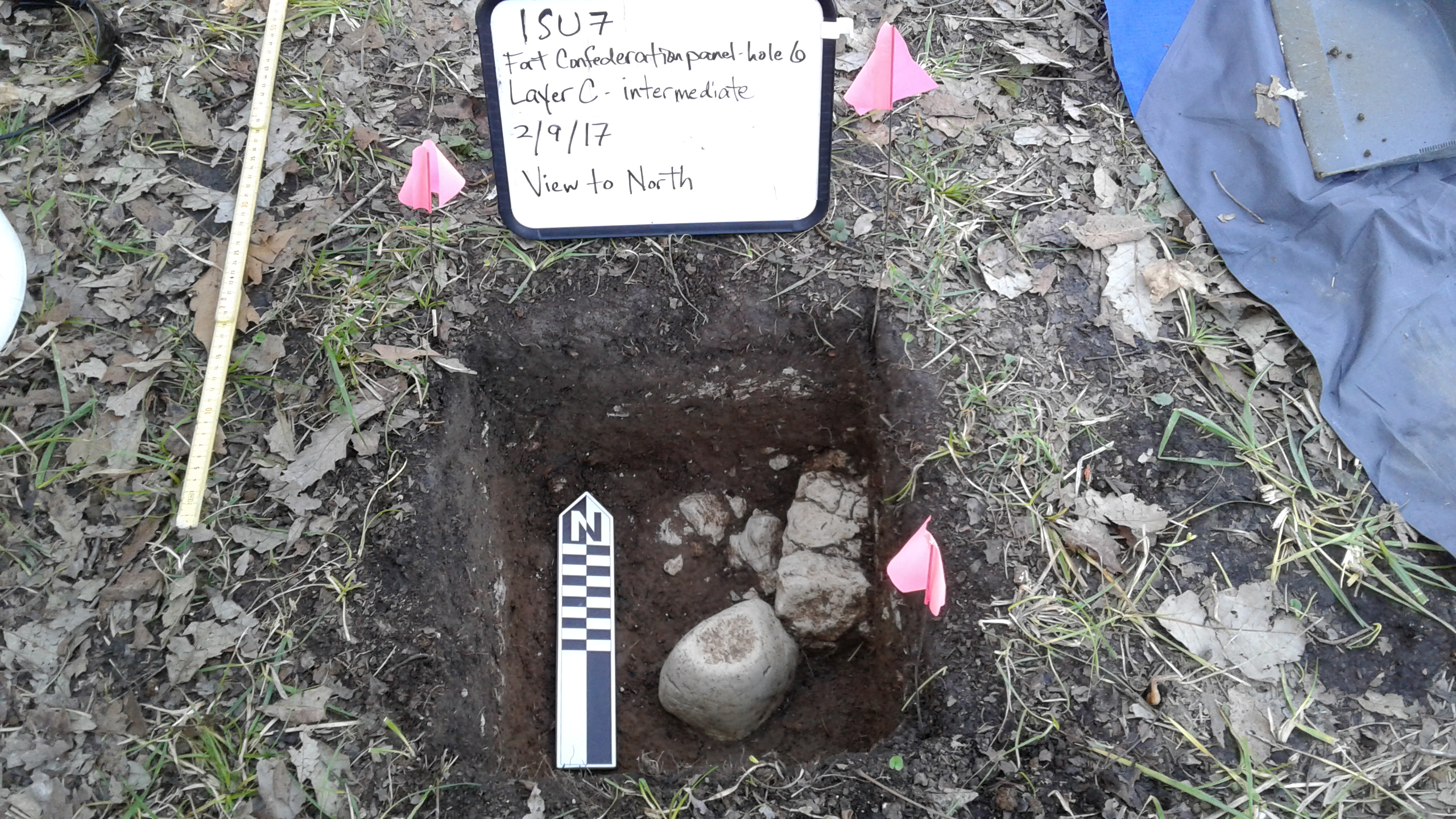by Cory Sly
Hello to all of our Fort Tombecbe blog readers out there! This is my first experience with field school after several years of being involved with Anthropology courses. Field school has been particularly compelling for me due to a unique personal interest in the history of the Fort itself. Last Thursday (02/09/17) we had another exciting day of field school, where I continued excavating post hole #6. This is the same 35 cm-square hole we were excavating on our last date. We are still in the same F.S. (field specimen number), because the soil profile layer has not visibly changed. We began to excavate around some pieces of odd shaped chalk that appear to be features instead of natural deposits. As we carefully excavated around the chalk features they appeared to go deeper and also extend into the profile wall. After working around the chalk features and excavating as much loose dirt as possible we cleaned up the hole for a picture and screened the loose dirt for traces of artifacts. Unfortunately, after several days of rain had passed, it turned the soil into a very dense clay that was prone to forming into small “raisinet” sized clumps while screening the dirt. The dirt that was clumped up and couldn’t be properly screened was then bagged so that it could be brought to the lab for further analysis.Can you see Layers A, B, and C in the photo below? The chalk blocks are just appearing within Layer C clay.
